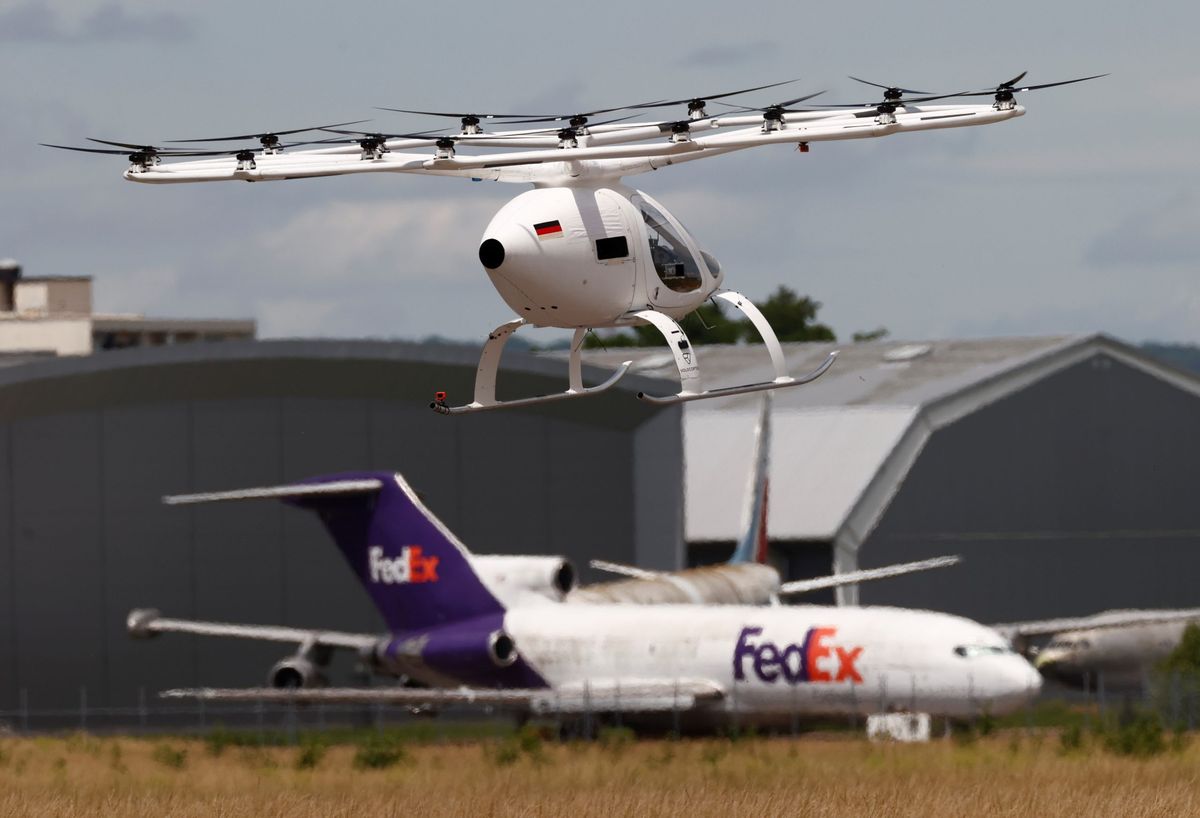Flying cars may be on roads and in skies by 2024

A few minutes every morning is all you need.
Stay up to date on the world's Headlines and Human Stories. It's fun, it's factual, it's fluff-free.
Consultant company Morgan Stanley predicts the currently untapped urban air mobility market could be as big as US$1.5 trillion by 2040.
Is it a bird? Is it a plane?
- Nope, but plane was a good guess!
- Instead, it looks like there might actually be room on the horizon for flying cars, or more accurately, flying taxis.
- VTOLs (for “vertical takeoff and landing”), basically looks like a two-seat helicopter, except instead of two big blades, it has a whole bunch of tiny ones like a drone.
- On July 6, a German company called Volocopter GmbH, which until now has mostly handled the design and development of eVTOL (the “e” being for electric, as their VTOLs are entirely electric), acquired a company called DG Flugzeugbau GmbH, an aircraft production company.
- The specifics of the acquisition have been kept pretty private, but what the this means is that Volocopter now has the certification from the European Union Aviation Safety Agency (EASA) for the production and design of the types of aircrafts it needs for a commercial launch.
Is there even a market for this?
- It looks like it, and Volocopter isn’t the only one getting in on the game.
- In late June of this year, a hybrid car-aircraft vehicle with a BMW engine, undertook a 35-minute flight between international airports between two cities in Slovakia, Nitra and Bratislava. The vehicle takes two minutes and 15 seconds to transform from car into aircraft and vice versa.
- Opener, a company based in California, has prototypes for a flying vehicle that its Canadian chief executive officer said will “change the way transportation happens.”
- Another one called Kitty Hawk Corp., which is also based in California and started by the Stanford University professor who founded Google’s self-driving car project, is trying to “free the world from traffic.”
- And it isn’t just startups trying to get in on it. Hyundai’s chief executive of European operations said that the company had made some “very significant investments” in urban air mobility, predicting that flying cars will help ease congestion in cities by the end of the decade.
- In fact, consultant company Morgan Stanley predicts the currently untapped urban air mobility market could be as big as US$1.5 trillion by 2040.
- And Volocopter sees even more potential. “Urban mobility is a more than 10 trillion dollar market,” said Florian Reuter, Volocopter’s CEO. “We estimate that, by 2035, we can serve a market that has around 300 billion dollars in opportunity.”
Are there critics of the flying car?
- Yes, and one notable critic is Elon Musk.
- Musk has said that he isn’t a proponent of flying cars, arguing that it isn’t a scalable solution.
- His proposed alternative takes its form in The Boring Company – Musk’s venture to dig tunnels for high-speed transportation underground.
- Musk also says that debris from cars could be problematic for those below the cars, or as he put it more colorfully, “If somebody doesn’t maintain their flying car, it could drop a hubcap and guillotine you.”
Where and when can we expect these flying cars to show up?
- For Volocopter, the answer is Paris, France, in 2024, just as the Summer Olympics roll around. In fact, just a couple weeks before they acquired DG Flugzeugbau, the company held a successful flight demo at the Paris Air Forum.
- Volocopter also has commitments to set up shops in Singapore, as well as some interests in certain Chinese cities as well.
- But, don’t worry if you don’t live in these places. So many companies are injecting money into this area globally that it isn’t likely that Volocopter will be the only company supplying car planes in the air.
- What to watch for next is the certifications from groups like the Federal Aviation Administration (FAA) and the EASA. Volocopter has seemingly crossed that line first, but more will soon come, and those VTOLs are probably going to be the ones that go into regular use first.
- But, a hurdle that these manufacturing companies will face is mass production. As we’ve seen with Tesla Inc., scaling heavy manufacturing companies is very expensive and can bankrupt even the most well-funded companies.
- Still, keep in mind we’re also looking at a few years out at least. Volocopter is first in line and its due date isn’t until Summer 2024. So, at least for just a little while longer, we might just have to stick to the seemingly archaic car with, you know, tires.
Have a tip or story? Get in touch with our reporters at tips@themilsource.com




Comments ()